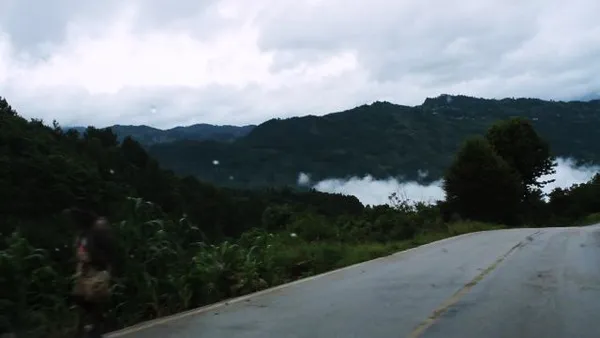Eye For Film >> Movies >> The Dance Of The Memory (2014) Film Review
The Dance Of The Memory
Reviewed by: Amber Wilkinson

Water imagery abounds in the debut feature from Gabriela Dominguez Ruvalcaba, from waterscapes at sunset to journeys beneath the waves, where the seahorse - whose Greek name hippocampus gives its name to the part of the brain that makes memories work - lives. The metaphor is apt for a film that aims to explore the fluidity of memory and the way that tides of different information can sculpt or change it.
Taking her jumping off point from the idea of just seven items being able to remembered at once by our short-term memory, Ruvalcaba uses images from her own childhood to evoke and ruminate on seven memories that have been key to her life. The documentarian is glimpsed in 8mm and super-8 footage as well as a series of still photographs, many of them faded or with patches missing due to the passage of time. As they play, she explores the discrepancy between what we remember about an event and how looking at an image or footage of the same thing later can become bonded to - or replace - our original memory. She considers the fact that memories are not a concrete storage spot in the brain, but electrical impulses that fire and build pathways, while taking time to outlinethe way our senses are also linked to memories of events and the way in which we can even appropriate the memories of others by looking at footage. She also highlights the way that insignificant details, such as the taste of a kiss, can become very important in our recollection.

Her argument is presented in an essay style, as photos and film from her family archive and beyond illustrate the eddy and flow of her argument. Among the particularly striking images is her consideration of they way in which a street might hold a memory of people who once walked there - showing pictures of soldiers melting into the shoppers of today. It's a shame she doesn't linger a little longer here, as she sets up a tantalising notion of the vagaries of collective national memory but quickly retreats to the less controversial waters of the personal.
Ruvalcaba's voice-over occasionally drifts but it is, by and large, poetic and meditative, with a sense that she is reaching her own conclusions through the process of making the film itself - such as deciding not to capture a particular scene on camera but rather to keep it within the confines of her memory. Inquisitive and sharply edited to provoke an almost tactile response to the physical material from her audience - right through to an inventive credit sequence that uses clear overlays on a light - Ruvalcaba has crafted an appropriately memorable consideration of memory, its mutability and its importance to the present.
Reviewed on: 21 Jun 2015
















